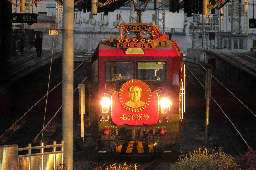But of course nothing cool can ever happen so :deeper-sadness:
Malls are also almost always on bus lines that can help get people to services, which could help with the whole "no showers" problem. Might need to increase services to the area to make up for the mass exodus of people leaving to go about their day each morning though. Having services on-site would help, but might not be best for helping people transition back into the community.
And I would really hate to work in a shelter that big tbh, doing safety rounds etc. I've worked in converted churches, community centers and bus stations, all way smaller than a mall, and even those had way too many hidden nooks and crannies to be safe. Saving people from overdosing is a very real part of the low-barrier shelter experience, and the less time you need to spend doing safety patrols, the more time you can spend actually serving people. Maybe I'm overthinking this.
No, those are really good points. You have the experience to bring up valid concerns that come from relative experience. That could save this idea and help work to make it a reality with enough problem solving.
Yeah I don't want to poo-poo anything that tries to help people dealing with homelessness. Shelters are just kinda my area of expertise so I can't not notice it. It's like watching House with my doctor friend - I see fun medical drama, she gets upset at the bad depictions of medicine.
Like to go on a bit of a tangent, my partner (also a shelter guy) is playing the Playstation Spiderman games right now, and in them Peter helps run a homeless shelter out of an old community center. We once got distracted for like half an hour critiquing how the layout was set up, how much wasted space there was, and how we would have done it. Place was terribly underutilized and would have been a disaster irl.
Do you think having too many nooks/etc would be as dangerous if the mall-shelters had like a safe-usage area or something, so people could do their drugs under the supervision of someone who can monitor them and administer narcan if need be, and not worry about needing to not get caught doing them? Or would there be other safety issues that would be exacerbated by big layout like a mall (e.g. assaults)?
So most of the trouble in low-barrier shelters is going to come from:
a) Theft - an obvious one. Good lockers help, especially if they aren't in the same room as the sleeping areas. Large spaces are actually really good for this. If you are stuck with lockers in the sleeping room, you can kick people out of the room during the day to prevent theft, but then you're denying sleep to people who might really need it. Cameras help, but always have blind spots and are really more useful for investigating than stopping theft.
b) Issues surrounding drug use - Obviously overdoses are a big concern, but when people are under the influence they also often act in ways that piss other people off. Meth is definitely a bigger problem than opiates there in my experience. Lotta fights start with someone having too much energy and annoying other people. You also get a lot of people in recovery who can really struggle with their neighbors using.
c) Interrupted sleep - This is kind of the big one that everything feeds into. Lockers slamming at night, people moving around all night because they are too high to sleep, just the struggle of having a ton of people sleeping in the same room... When I worked night shift, most of my job was telling people to shut up or move to the common areas, and getting yelled at by people who hadn't had a good night's sleep in days due to drugs or interruptions.
Having safe usage areas in a mall environment could help with overdoses (provided there are multiple spaces so people utilizing the service can do so away from people they are beefing with), and the space lends itself to separate storage spaces and distant sleeping arrangements. I just think a more distributed system of shelters would help serve people's needs better and integrate them into the community more.
Assaults are fortunately very rare in my experience, and usually start with one of the three issues I mentioned.
That makes a ton of sense and is really interesting to consider — thanks for sharing your thoughts and experience!
DasKarlBarx has a very good point down below about the reality of what happens when you create a single large place for people to recover (harder for them to ever leave). Suggests what you do actually Society_Liver, smaller places, all next to essential resources being a better set up. Seems mall conversion into housing is more of a cool dystopia idea that a true way forward to help our homeless.
So it may be an unpopular opinion , but I think its better to just tear down malls instead of trying to repurpose them.
First, you have the issue of consolidation of poverty. Dropping hundreds to a thousand formerly unhoused people into one spot makes it more difficult for them to reintegrate to society. It was a similar issue that occurred with public housing projects in the mid-20th century. The consolidation of poverty to one area makes it difficult to escape.
Second, living in a mall (at least the ones I went to in the 90s) would be a nightmare. Having a place with no windows and all that artificial lighting would just be dreary AF. I also have a hard time believing these things structurally were built to last anyway.
I think finding a way to operate more, smaller scale shelters spread throughout cities (as long as they remain close to services that people will need) is a better route.
Counter-counterpoint: everywhere should be open for parkour and skating so that we can tear down malls.
Okay but they're uniquely good for it. Parking lot off ramps, those layers of balconies with like rafters running between them, huge open spaces, weird corporate art that's super climbable, drained swimming pools...
Malls should be left open
Malls should be totally public spaces where anyone can apply for a temporary storefront or rent a stall for a low fixed price (but also that stuff)
Good points. I think the meme is most effective at getting people to think about how much abandoned infrastructure there is that could be used for something beneficial, instead of whatever some real estate ghoul thinks is a fun idea.
Oh yeah absolutely. The idea of taking [back] cities instead of them being vehicles for real estate speculation is always good to spread.
Noooo malls must remain abandoned so I can do urban exploring on my youtube channel and set it to vaporwave and weird vhs filters so my zoomer audience can have the AUTHENTIC 90'S EXPERIENCE ™️ and I can get ad revenue, don't turn these into homes for stinky poor people! :wojak-nooo:
I had thought that everyone have a subconscious dislike toward the concept of property and how it limits their freedom of movement, so there's a special alure to once limited space now being open for all to explore.
That's why games with sandbox elements are still going strong even with constant criticism about them being overused and pointless, because the feeling of being able to go wherever whenever with no arbitrary restriction is just wonderful.
i mean urbex and squatting have a good amount of overlap
Victor Gruen, the socialist who invented modern malls, originally intended for them to have housing.
Socialist invents malls, intending them to be a modern agora and center of the local community.
The monkey's paw curls.
would it be feasible to live out of an abandoned mall with the right preparations and sets of skills? could you gather a group of friends, section a part of the mall off, and turn it into home?
Without electricity and utilities it isn't much more than a roof and walls with almost no natural light. Also wouldn't reccomend using gas inside as the ventilation will be pants without the fans running.
Every mall should be converted into the community space capitalists pretended it would be when they built them to replace the town square.
An historic mall in Providence (RI) was converted into micro-apartments. Way expensive rents of course but something like this could be done for low-or no-cost transitional or permanent housing.
The mall stores can be made into apartments with some sections left for mixed use.
This was a little how my college dorm was set up and it was awesome. Shared kitchen and dining room, pool room, dance studio, art room, etc. A real fucking community.
https://www.arcadeprovidence.com/
https://youtu.be/HmL2l-bcuUQ
Could be worse. Look what's happening in Portland. https://www.wweek.com/news/2020/12/19/never-used-wapato-jail-is-now-operating-as-a-homeless-shelter/
It's in the middle of fucking nowhere.
I think something like this happens in the novel Makers by Cory Doctorow, but it's been awhile since I read it.
Yup
Hollywood, Florida’s biggest junkyard was situated in the rubble of a half-built ghost-mall off Taft Street. Suzanne’s Miami airport rental car came with a GPS, but the little box hadn’t ever heard of the mall; it was off the map. So she took a moment in the sweltering parking-lot of her coffin hotel to call her interview subject again and get better coordinates.
“Yeah, it’s ’cause they never finished building the mall, so the address hasn’t been included in the USGS maps. The open GPSes all have these better maps made by geohackers, but the rental car companies have got a real hard-on for official map-data. Morons. Hang on, lemme get my GPS out and I’ll get you some decent lat-long.”
Cory’s got it up for free on his website
For anyone who hasn’t read it before, it’s a great book, but there’s a lot of the fatphobia of the late oughts lingering in there
homeless shelters with half pipes, and places where food not bombs can come and serve food. yes.
Build good, free, public, dense housing near services. Place it in a dense area so that it's integrated with the rest of the community. It'll probably be cheaper than repurposing a mall info residences and be way easier for delivering services.











